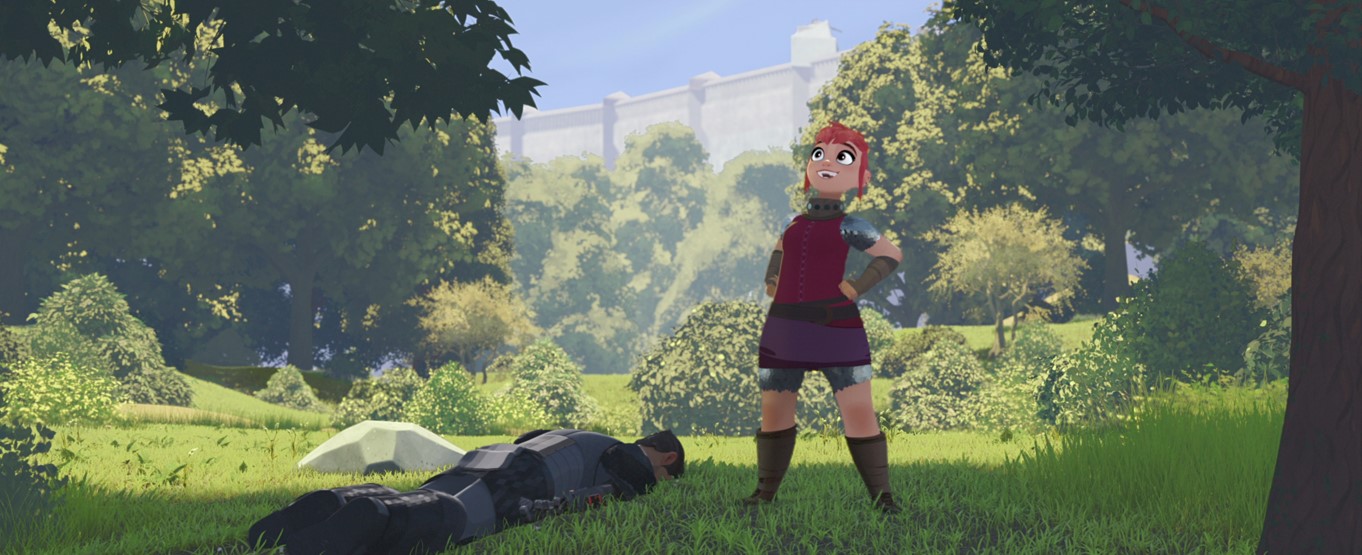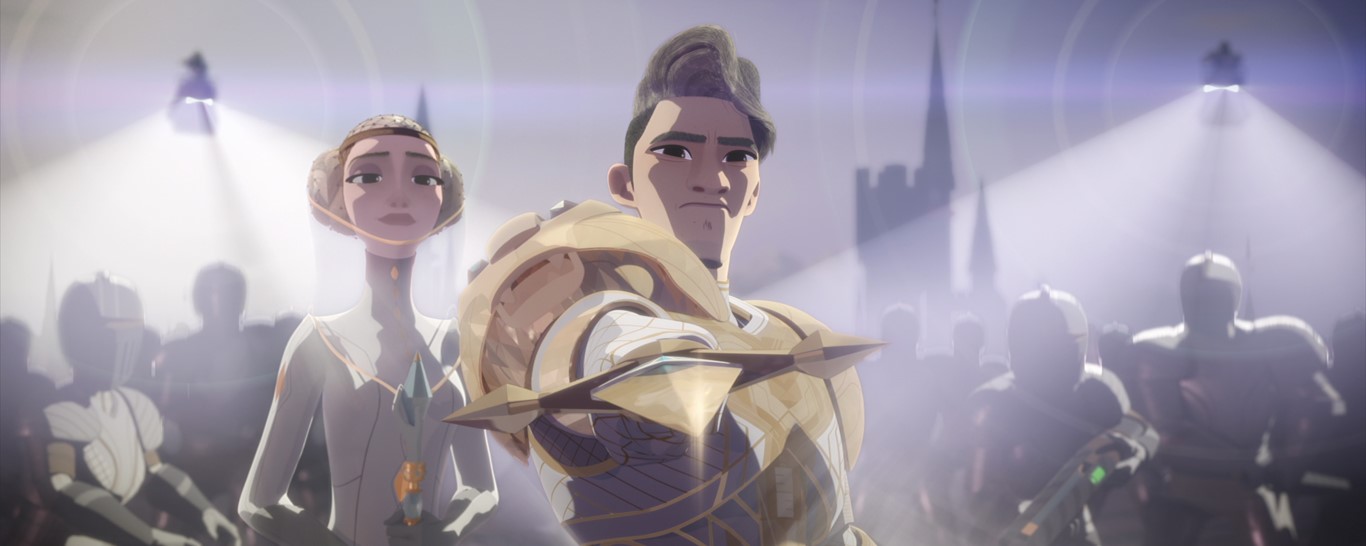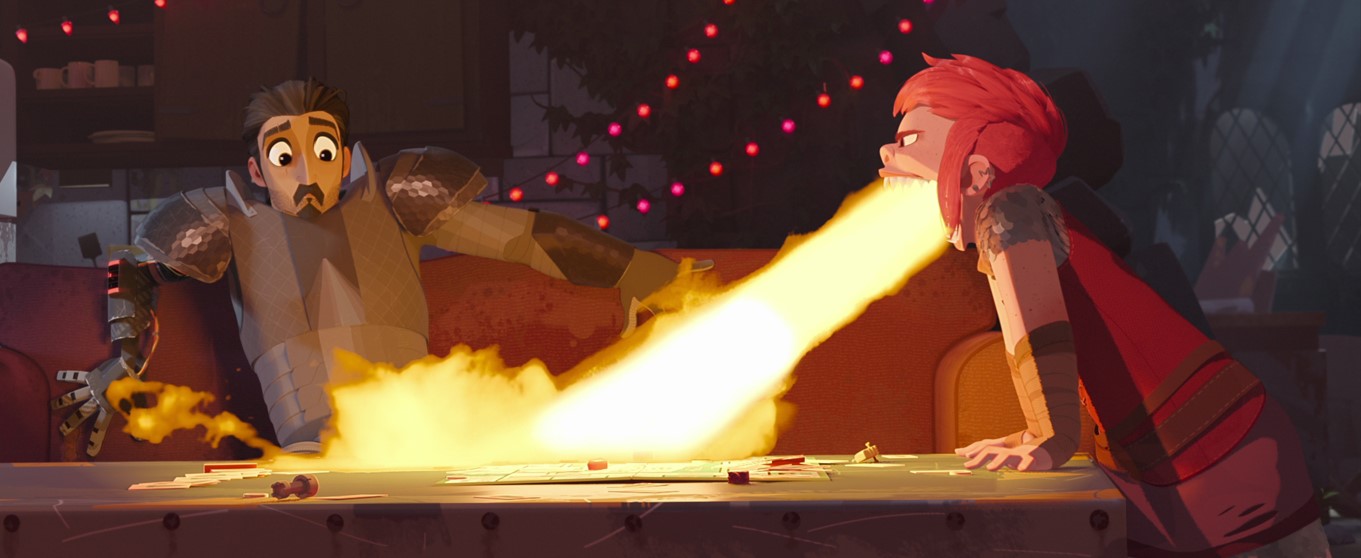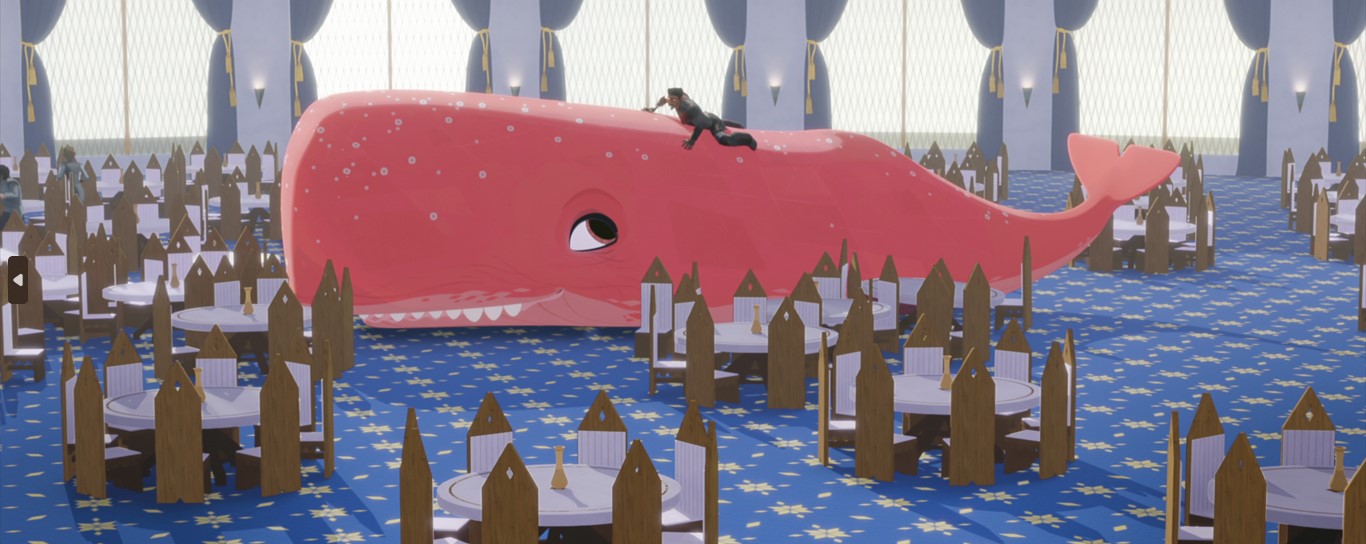Directed by Troy Quane and Nick Bruno, Netflix’s ‘Nimona’ is an animated action-adventure film that deals with themes such as identity, non-conformity, and standing up against authoritarian governmental organizations. Based on the 2015 graphic novel of the same name, the plot is set in a world that is a complex blend of science fiction and fantasy and revolves around Ballister Boldheart (Riz Ahmed), a disgraced knight accused of murdering the queen of the realm. He encounters Nimona (Chloë Grace Moretz), a chaotic shapeshifter determined to become his sidekick, even after learning that he is not the killer the rest of the kingdom claims he is. Together, they embark on an incredible adventure to find the person who framed Ballister. Here is everything you might want to know about the ending of ‘Nimona.’ SPOILERS AHEAD.
Nimona Plot Synopsis
By design, ‘Nimona’ is one of those rare fantasy projects where time and science have been allowed to move concurrently. It begins with the narration by Nimona, establishing the lore of the film. Some 1000 years ago, the nameless kingdom was at peace until the appearance of an evil and destructive monster. The paintings in the scrolls from the time depict that the monster had countless eyes. Soon, a heroic knight emerged to challenge the monster — Gloreth. After defeating the monster, she instructed a wall to be built around the city to keep similar entities out and established an elite order of knights called the Institute to protect the realm, decreeing that only the descendants of these knights can join the Institute in the future.

When Ballister was young, he dreamt of knightly honor and glory, prompting Queen Valerin (Lorraine Toussaint) to enroll him in the Institute class for future knights. She did this even though he was from a commoner background, going against Gloreth’s will and a tradition that has existed for 1,000 years. Predictably, the decision has been regarded as controversial since then, even among people from Ballister’s social status.
The film’s narrative picks up on the day of Ballister’s knighthood ceremony. People are still unsure about his inclusion, but they seem to have come to accept it because he has proven himself by being the best student in a class that includes Ambrosius Goldenloin (Eugene Lee Yang), a direct descendant of Gloreth who also happens to be Ballister’s romantic partner. Just before the ceremony, the Director (Frances Conroy) addresses Ballister, Ambrosius, and other graduating knights, letting them know what lies ahead. To Ballister, in particular, she says that this day the kingdom will see him for who he really is.
The first one to be knighted is Ambrosius, likely because of the family he belongs to. Ballister is second, but just as the queen returns his sword after making him a knight, it activates and kills her. A moment ago, it seemed that the people of the kingdom had accepted Ballister for who he was, but now he is a murder suspect. While this is happening, Ambrosius swings his own sword and amputates one of Ballister’s arms. As Ballister prepares a prosthetic arm for himself, he gets a visitor at his ramshackle hiding place: an apparent teenager who introduces herself as Nimona. She declares that she is there to be the sidekick of the man who killed the queen.
Although Nimona is somewhat disappointed after learning that he isn’t really a murderer and that someone has framed him, she insists that her offer of being his sidekick still stands. Disregarding that, Ballister goes to tell the Institute that he is not the murderer and is imprisoned for his trouble, just as Nimona predicted. Suddenly, he finds the girl in his cell, making him realize there is something different about her. After she breaks him out, he discovers what it is. As a shapeshifter, she can take any humanoid or non-humanoid shape she wants to. By shifting between a gorilla, a rhinoceros, and a whale, among other things, she gets him out of the Institute headquarters.
Back at their hideaway, Ballister struggles with accepting what just happened, especially because his education as a knight of the Institute has taught him that entities with special abilities can be only one thing: a monster. Dealing with a mixture of fear and curiosity, Ballister is allowed to ask one question. When he asks why she wants to help him, Nimona immediately answers that it is because she is bored but later adds that he is also hated by everyone, implying that people hate her too. Meanwhile, the Director puts Ambrosius in charge of finding Ballister.
Nimona Ending: Who Framed Ballister?
Right before the knighting ceremony, a squire named Diego (Julio Torres) distributed the swords among the knights. Concluding that he might have some answers, Ballister and Nimona venture into the town, inadvertently cause havoc, and abducts the young man. They learn that the Director of the Institute framed Ballister by replacing the sword. Diego even accidentally recorded the entire thing. As Ballister still believes in the Institute, he doesn’t want to bring it down by publically revealing that the Director killed the queen.

Ballister wants to pass the video to Ambrosius, prompting Nimona to remark that he is brainwashed. According to her, Ballister should question everything about his society –the wall, the Institute, and the Will of Gloreth. Although the phone carrying the video evidence is destroyed, Ballister and Nimona trick the Director into confessing everything and upload the video on the internet for everyone to see. This is when the Director finds an old scroll with the revelations about Nimona’s real identity — she is the “monster that Gloreth faced 1,000 years ago.
The reasons behind the Director’s actions are rooted in her fanatical devotion to the Will of Gloreth and the purpose of the Institute. She has no qualms about killing the queen to prevent a commoner from becoming a knight of the Institute, especially if the said queen ordered the inclusion. Similarly, she encounters no moral dilemma while deciding to sacrifice hundreds of thousands of the citizens of the kingdom with her massive cannon just to kill Nimona.
Is Nimona Dead?
Nimona’s origin is not explained in the movie, but we know she felt alone even among the birds in the trees, the fish in the streams, and the animals in the woods. They quickly realized that she wasn’t one of them and moved away from her. Things started to change when Nimona, in the form of a young girl, met another girl. A friendship began to form between the two, and it survived even the revelation that Nimona was a shapeshifter. However, when the adults discovered the truth about her, their response also impacted Nimona’s friend. Their foolish acts caused Nimona to lash out angrily, causing a massive fire.

It is then that Nimona’s friend picked up a wooden sword and told her to return to the shadows from where she came. That friend was none other than Gloreth. Over 1,000 years, that story underwent considerable changes to become what it is now. In the present timeline, feeling betrayed by Ballister, Nimona transforms into a colossal monster. But instead of wreaking havoc in the city, she approaches Gloreth’s statue in the middle of the city and prepares herself to fall on the statue’s sword, but Ballister stops her at the last moment. He apologizes for his behavior, and Nimona turns back to human.
As they embrace, the Director reiterates her orders to fire the cannon. Ambrosius and the other knights refuse, so she turns on the device by herself. This prompts Nimona to transform into a massive phoenix made out of pure light and fly toward the cannon to consume the weapon. Afterward, Ballister doesn’t find Nimona anywhere but holds on to the belief that she is out there. It is implied that the Director is dead. Ballister and Ambrosius reconcile, and they resume their relationship. Part of the wall is destroyed, and it turns out that the world beyond is just as ordinary as the world within. As the film ends, Ballister opens the door to his home and discovers that Nimona is standing behind him. Like a true phoenix, she has returned from death.
Is Nimona a Metaphor to LGBTQ+ Acceptance?

Released during Pride Month, ‘Nimona’ is indeed a metaphor for LGBTQ+ acceptance. It takes subdued elements from the source material and makes them overt. Ballister is openly gay, and his relationship with Ambrosius is one of the important sub-plots of the narrative. Nimona’s fluid approach to her identity is a nod to gender fluidity. Her monster form represents what society and traditional institutions erroneously perceive as evil about the LGBTQ+ community.

